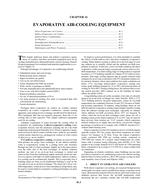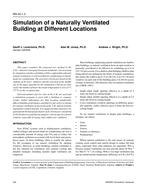Water vapor is one of the primary products of combustion. Since unvented gas fireplaces release all combustion products into the home this means that a substantial amount of moisture is added to the indoor air during fireplace operation. An analysis of the indoor moisture levels in 30 homes using unvented gas fireplaces was performed using measurements from multiple locations in each home. Several different metrics were considered, including relative humidity (commonly used in assessments of comfort), vapor pressure (a temperature-independent metric), and dew-point (important for potential problems at surfaces). There was a median increase in vapor pressure of about 0.1 kPa (0.015 psi) for the sample of homes. Vapor pressures were typically fairly uniform within each home, with the most distant rooms often showing a slightly lower vapor pressure. The direction and magnitude of changes in relative humidity depended on the proximity to the fireplace, with locations further from the fireplace having higher relative humidity levels because of a lesser temperature influence. Dew-point levels rarely exceeded 50ºF (10°C), which is approximately the dew-point required for condensation on a double-pane window when the indoor temperature is 70ºF (21°C)and the outdoor temperature is 10ºF (–12°C).
Units: Dual
Citation: ASHRAE Transactions, vol. 115, pt. 2, Louisville 2009
Product Details
- Published:
- 2009
- Number of Pages:
- 10
- File Size:
- 1 file , 400 KB
- Product Code(s):
- D-LO-09-087


